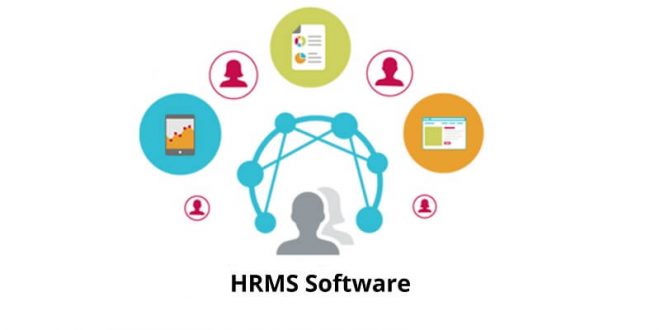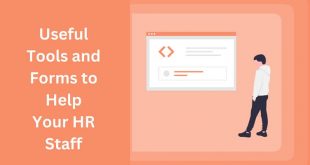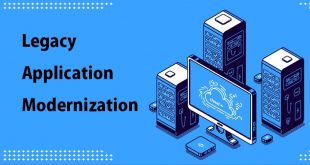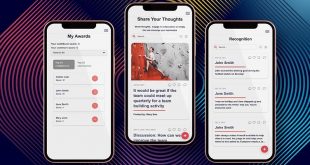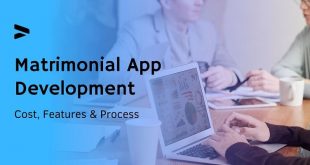Hey guys, today in this blog post, we are going to discuss the five ways HRMS software simplifies human resources management. So keep reading.
People think that human resource management is an easy job, but it’s not as easy. Due to workload and professional responsibilities, employees feel exhausted and juggle papers and spreadsheets. As a result of this juggling, they feel anxiety and work pressure and are unproductive at the end of the day. But all thanks to technology, things have become so easy. We can say that technology is no less than a blessing for human resource management. Many companies are taking advantage of these automation apps and web services. So, if you want to get in the same boat, you only need the correct information.
What Is HRMS? A Breakdown Of The Definition:
We face hardships, dynamic responsibilities, and pressure every day in the working environment. But we can deal with all these with efficient strategies and technological warriors. HRMS software is on the top list when we talk about technical warriors. HRMS joins information technology with HR practices. According to the basic definition:
An HRMS is a set of systems and software that we organizations use to manage tasks. Companies can use the system throughout the lifecycle if it’s meeting needs.
The HRMS comes with many benefits and advanced features. For instance, it helps to understand tax laws and labor regulations, which is fantastic for staying compliant. The HR leader or manager is the primary person who sees the day-to-day functions and performance reports. However, the benefits and features aren’t limited, and they bring many advantages to other departments.
Difference B/W HRMS & HRIS:
Many people need clarification on HRMS & HRIS, but both are synonyms. The term HRIS stands for a human resource information system. HRIS is a branch or type of HRMS. However, there are notable differences between the two technologies.
| HRMS | HRIS |
| It’s a more robust system | Track numerical data and employee information |
| Combines HR and IT | Helps HR to manage policies and procedures |
| Perform all functions that HRIS does | It also helps to perform reporting, training, recruiting, and compensation management. |
| HCM is an additional feature of the HRMS | Accounting functions are also included in the to-do list |
| Onboarding, employee satisfaction, job performance, analytics, and profitability are also top features |
You can use HRMS for the Workation pattern; it helps when you have more than ten employees. Moreover, if we look at the record, 13% of companies are using only one system for HR management. However, many organizations are using a combination of 3-4 software that makes data processing easy. The main aim is to find a system to create better and integrated solutions. In this way, the HR manager can directly use the strategies to improve employee engagement and performance.
How Does HRMS Software Simplify The Process?
If we look back in history, then in 1970, companies felt the need to automate their HR processes. Due to this need, the paystub maker became the first software to record earnings and tax deductions. However, it required mainframe technology, and later, direct deposits took place, and the payroll process became electronic. To fill this gap, in 1980, PEOPLESOFT introduced the first HRMS software. Now, we have come so far, and it’s making our life easier in the following ways:
Employee & Candidate Management:
Advertising candidates and employment offers are always a challenging part of the business. However, companies can now use HRMS to promote job positions in the national or international market. Moreover, the HRMS makes things easy in these areas:
- Applying
- Resume management
- Interview scheduling
- Making offers and onboarding
Furthermore, when it comes to employee management, HRMS is still catching up. Usually, this feature belongs to the core HR and helps analyze, report, and comply. It’s best to make the whole organization one working unit by aligning payroll and accounting tasks. In addition to this, it helps HR to improve the daily services.
Payroll Management:
If an organization uses HRMS, you don’t need a separate paystub maker. The HRMS performs everything from earning calculation and gross and net income to issuing payments. Moreover, if you buy a complete payroll service, it would allow employees to make changes in deductions, direct deposits, and tax withholdings. Besides, due to HRMS, employees can get the payroll without the assistance of the HR manager. HRMS is a combo of HR software and a paystub maker. In addition to this, you can keep all employee-related records in one place through this service. You can access the software anytime to update and maintain the record for better reporting. Later, you can use these reports to prepare audit records and bookkeeping. So, HRMS is beneficial for other departments as well.
Helps In Reporting & Analytics:
Besides, it helps to develop the reports and the ability to run the operational reports. It helps to track HR information, reporting, and records. Apart from this, you can even measure the key performance indicators to track the performance. If you know the company’s financial dashboards, then you can make wise decisions. In addition to this, it helps in the following:
| Calculate salaries | Hourly wages | Variable payments for bonuses |
| Overtime | Sales commission | Elective deductions |
You can calculate accurate net payments, retirement fund contributions, and mobile phone reimbursements.
Talent Management & Work Planning:
You can’t manage the talent without doing work planning. So, the HRMS is best for evaluating performance based on the reviews, goal management, and skill set administration. In addition to this, the software lets you plan the budget for workforce costs. You can even identify high-income skills, gaps, and plans that you need to pace up the efforts. However, for these activities, you can take the help of HRMS. But if the company is out of budget, you can buy from a single provider. The HRMS could be expensive, complex, and challenging to secure. So, do the proper planning before buying one.
Other Features Of HRMS:
In addition to the above features, there are other ways in which HRMS software simplifies the HR functions. So, here are a few more simplicities that you can enjoy with HRMS:
- It gives better and deeper insight into the workforce and performance
- Helps to improve employee engagement
- You can acquire good talent for the workforce
- Provide remote access from anywhere, which makes it easy to use
- Fewer chances of human error
- Keep safe from fraud
- Reduce the admin work
- Helps in recruitment
- Performance and compensation management
Moreover, you don’t need to worry about security because HRMS software comes with a high level of protection and privacy. You can even turn on the two-factor authentication to add an extra layer of security.
 Free Web Resources , psd, mockups, & web templates Best WordPress Themes & Best Html Templates
Free Web Resources , psd, mockups, & web templates Best WordPress Themes & Best Html Templates
